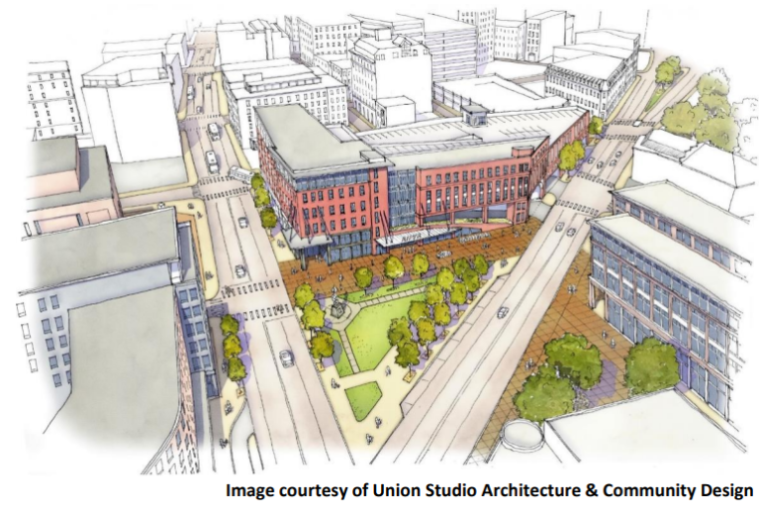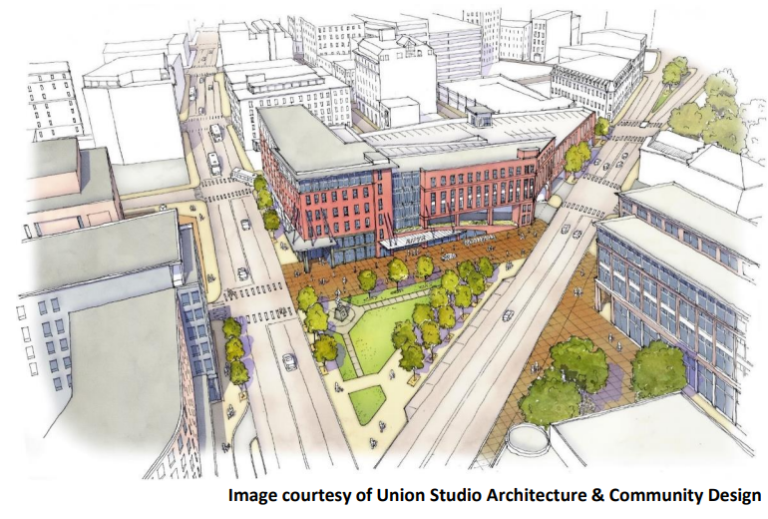
Public officials in Austin hope that the ongoing multi-billion-dollar transit authority project there will reduce automobile traffic by 50 percent when completed. Whether that goal is reachable or not is undetermined, but the project is indicative of a shift in public transit throughout the country.
Mobility hub projects that connect citizens and neighborhoods to a variety of different transportation networks are being launched at a rapid pace. The projects are similar in nature in that they underscore a more streamlined, integrative approach to transportation. They are designed to blend seamlessly into residential and commercial amenities. Now, more than ever, public officials are allocating generous portions of their capital budgets to mobility hubs projects while also accepting federal funding to enhance and expand disjointed and divisive public transit infrastructure.
In Lake Tahoe, Nevada, multiple federal, state, and local public entities are partnering to deliver a new mobility hub that will enhance regional transportation and improve access to the scenic Spooner Lake at Lake Tahoe Nevada State Park. The Tahoe Transportation District is spearheading development of the new transit facility. It is currently in the planning and conceptual design stage. The project will include development of 7.4 miles of a multi-use path, transit stops, and construction of a transit mobility hub with 250 parking spaces. The long pathway will wind past several regional attractions and the project’s cost is estimated at $88 million.
The Rhode Island Public Transit Authority (RIPTA) and state Department of Transportation (RIDOT) will jointly launch several new transit center projects designed to streamline mobility throughout the state. One center will include covered bus berths, interior customer services, retail amenities, dining options, office space, workforce housing, and parking facilities. This project will be supported by $35 million in bond funding. The RIPTA’s broader transit plan includes $91 million for work on new mobility hubs over the next several years. Procurement activities are scheduled to begin in September, and there is a possibility that public-private partnerships will be the delivery models.
The Southeastern Pennsylvania Transportation Authority (SEPTA) will invest hundreds of millions of dollars in mobility hubs to ensure that regional transportation is equitable, sustainable, and prosperous. A recent grant of $10 million from the Federal Transit Administration almost fully funds the $12.3 million cost of a new South Philadelphia Transportation Center. The project will include accessible bus stops, shelters, signage, lighting, safety features, and numerous amenities. The project is scheduled to begin design soon.
SEPTA also has plans to launch a project at its Paoli Transportation Center. This effort will consolidate bus and passenger rail connections in a single facility and will include construction of additional outbound platforms, passenger amenities, enhanced bus facilities, and improved station access. A budget of $50.3 million has been allocated.
TriMet, the agency that operates mass transit across the Portland metropolitan region in Oregon, is working to standardize the “next generation” of transit hubs with its Hollywood Transit Center. This project will modernize the existing TriMet infrastructure to accommodate buses, local commuter trains, micro-mobility (pedestrian walkways and bike lanes) connections, bike storage, and other more sustainable means of transportation. TriMet will partner with local nonprofits and public agencies to deliver the unified transportation hub with enhanced lighting, signage, and open public spaces. The facility’s conceptual design also includes affordable housing options, and $29 million in funding is available from an affordable housing bond program.
The San Diego Association of Governments will create a new mobility hub at the port on Pacific Highway. It will be serviced by a trolley that connects passengers to the nearby San Diego International Airport. A portion of the project’s funding will come from a $500 million pledge by the San Diego County Regional Airport Authority. The broader vision of the plan then entails linking these new transit connections to the current city hall complex, which will be converted into a centralized mobility hub.
The Ohio community of Johnstown, which will soon be recognized as a city, has plans for a $75 million mobility hub. Local officials are pursuing federal funds for the new facility, which will consolidate transportation services across the area and function as a mobility industry incubator with capacity to create 100 to 200 new jobs. Plans for the Innovation Center Mobility Factory include a bus stop, layover zones, transit shelters, real-time arrival information, bike share stations, bike storage, car share facilities, electric vehicle (EV) chargers, and additional space for possible use by electric vertical take-off and landing drones.
The department of transportation in Honolulu is currently exploring feasible alternatives for a mobility hub near its future passenger rail station. Among several identified alternatives, all versions of the Kalia Transit Plaza & Mobility Hub feature a mixed-use facility that blends several public transportation operations with amenities for commercial and residential use. City officials are seeking input related from citizens related to the project’s conceptual design.
Opportunities such as these provide insight into America’s mobility hubs and transit centers of the future. The initiatives will all likely be large, complicated, expensive, and contain assorted opportunities for private-sector contractors and partners.
